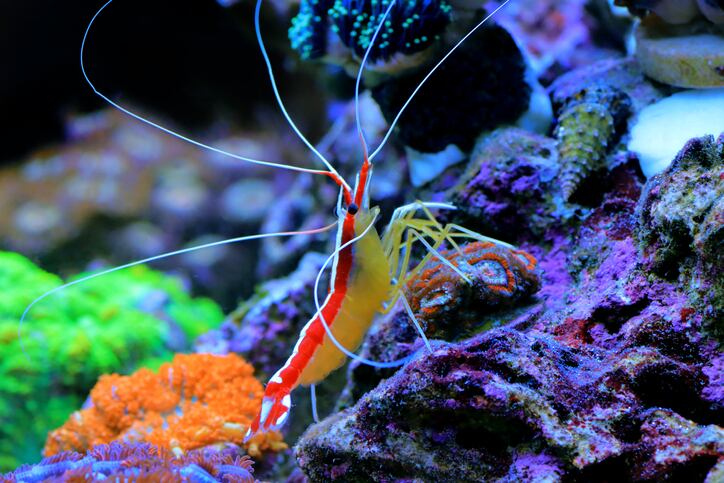The Pacific Cleaner Shrimp uses white stripes on its body to attract fish, which it then proceeds to clean by eating parasites off the fish’s body.
After studying the white material found in cleaner shrimp, Israeli researchers discovered a completely new principle in optics that produces one of the most efficient white reflectors.
Despite being less than 5 microns thick, the whiteness produced by the shrimp is extremely bright, making it one of the thinnest and most efficient white materials that exist.
They realized not only that the particles are liquid crystals, like those in LCD displays, but that they exhibit birefringence (dual refraction), which is “exceedingly” rare in the animal world.
Dual refraction is the splitting of a ray of light into two rays when it passes through certain types of material.
The big challenge for the food industry, meanwhile, is to create whiteness with very little material on very thin scale.
According to the researchers, this special arrangement of molecules in the cleaner shrimp is key to overcoming the ‘optical crowding’ hurdle, allowing the particles to be packed densely, reducing the thickness of the layer required to produce bright whiteness.
The researchers therefore hope to replicate this effect to make whitening agents in foods.
The unique quality in the material found in the cleaner shrimp is that it can form dense scattering layers without compromising the scattering properties, explained Professor Dan Oron, from the Department of Molecular Chemistry and Materials Science at the Weizmann Institute of Science.
“For ‘normal’ materials, scattering drops beyond a certain density of scatterers, this is usually termed ‘optical crowding’. This is due to the birefringence of the particles; that is, their special optical anisotropy,” he told FoodNavigator.
Explain the main challenges the researchers now expect to encounter as they make a white pigment that scatters like the white stripes on a The Pacific Cleaner Shrimp, he told us: “Forming such nanoscale structures is very challenging from any synthetic chemistry point of view. Clearly, in the biological system the materials synthesis is highly regulated. The main challenge is definitely to synthetically produce such anisotropic [a substance of which the properties vary depending on the direction] nanospheres.”
Start-ups meanwhile are attempting to make white pigments that scatter light in a similar manner to the Cyphocilus beetle's shell. Are there any other animals that could be investigated?
“We looked at quite a few creatures who live underwater, as optics in an aqueous environment is more demanding,” Oron said. “Yet, there are so many species, that it seems unreasonable that there are not other animals exhibiting this or related phenomena.”
Dr. Ben Palmer from Ben-Gurion University of the Negev added: “It is really one of the first times we have learned an entirely new principle from studying an organism. The shrimp has overcome a seemingly fundamental hurdle in optics by creating particles with this special arrangement of molecules. Now the question is, how can we replicate this effect for creating new materials we could use as food additives in white bread, or in white paint and other applications?”
Reference
Brilliant whiteness in shrimp from ultra-thin layers of birefringent nanospheres
Nature Photonics
DOI: 10.1038/s41566-023-01182-4



